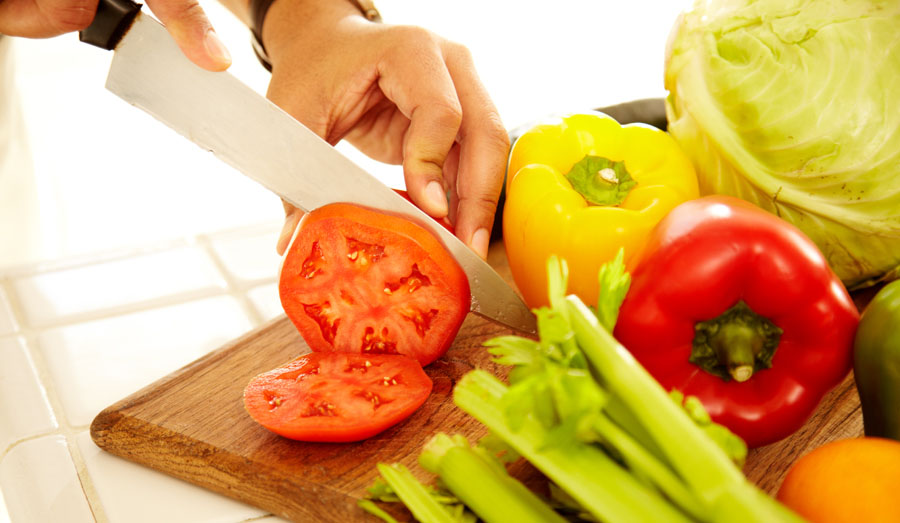In an earlier post, we introduced our readers to Dr. Kate Land, Kaiser Permanente pediatrician and mother of three active children. In honor of March being
What’s a parent to do? The news is so full of nutritional advice that it can seem impossible to know where to begin when attempting to feed children well. Sugar is increasingly viewed as a dietary mistake. Fiber is fantastic for preventing constipation and irritable bowel syndrome and is linked to a reduction in colon cancer. Blueberries and walnuts are packed with antioxidants. Salmon and tuna are rich in vitamin D and omega-3 fatty acids. Tuna may have mercury. Too much cow’s milk can lead to iron-deficiency anemia. Too much soy milk is risky as well.
 How does a parent put all of this advice into action?
How does a parent put all of this advice into action?
Parents often ask me questions about nutrition. They may worry their kids are too picky or not growing well. They have heard about the “obesity epidemic” and want to protect their family. We all want to send our kids out into their school days with the healthiest possible start, but how?
In conversations with parents in my office, I often find myself repeating the same advice about each of these topics. So I’ve pulled my advice together into what I like to call my Ten Nutritional Soundbites:
1. Make Snacks Count
Young children often need to snack frequently as they go through the day – they have small tummies and high energy needs. Big kids need lots of healthy food to keep up with their incredibly rapid growth through the teen years. Many parents feel that it is a challenge to get their child to eat all of the recommended servings of fruits, veggies and whole grains. One can use their child’s need to snack to help meet these nutritional goals. In other words, make snacks count! Some healthy options for school day snacks include almonds, high protein Greek yogurt, carrot sticks, hummus and whole wheat pita
2. You serve, they choose
There is an important division of labor when feeding children: Adults should choose the foods children are served and children should be allowed to select from those which and how much to eat. Children are built for success; if trusted and guided, they will eat the right amount of food for their bodies. Fill a child’s plate with good choices. Avoid soda, chips and sugary cereal and instead provide fruits, veggies, cheese, milk and whole grains. Then sit back, relax and let your very smart children make choices for themselves.
3. Limit drinks that taste sweet
I talk with many families that are doing so much right! They feed their kids great food and pack healthy lunches for school. But, they miss the mark by letting their kids have sweet drinks. I offer these parents the rule of thumb that one 8 oz. cup of juice a day has enough calories to cause a 15 lb. weight gain over a year. Often doing the right thing by our children means being a bit tough. Don’t buy the juice. Definitely skip the soda. Pack a water bottle for the school day.
4. Don’t worry about your child’s diet
Parental worry about kids’ diets can be harmful. If a parent is worried their child is too thin, they may urge the child to eat when not hungry. This can lead to overeating as an adult. Or, the pressure to eat can cause a child to “push back” and refuse to eat when they should. If you are worried about your child’s size or weight, make an appointment to see a pediatrician; leave the worrying to us!
5. Don’t be a short order chef
Picky kids driving you nuts? Time to take charge! Avoid cooking up multiple meals to please each kid. Make one dinner meal for the family and include foods your kids like. Put it on the table and let them eat. If they are hungry enough, they WILL eat it. It is perfectly fine to explain to a child refusing your dinner that there is no other option tonight; breakfast will be served in a few hours. Or, tell them if they don’t prefer your meal they may get up and make themselves a healthy sandwich.
6. Make lunches meaningful
If your kids get lunch at school, talk to them about their choices. When I did this I learned my first grader liked the salad bar. Cool – right? Nope. I learned that he would serve himself a whole bowl of croutons and cheese when no one was watching! Consider going to school at lunchtime and seeing what is offered. If it isn’t healthy, consider meeting with the principal and teachers to advocate for improvements.
If your child brings lunch to school, have them pack it with you or by themselves. Set some rules: one fruit, one veggie, some protein and let them choose from there. Guiding them through this offers you a perfect chance to teach some nutrition basics.
7. Go with their strong suits
If your child likes broccoli, serve a lot of broccoli! If lunches mean lots of apples, cut more! If you serve chicken, beans and brown rice and all they eat that night is rice, let them. It helps to think of their nutrition as something averaged over a week or a month. Not every day will be well-balanced, but add up the days and you are most likely doing well!
8. Talk with your kids about nutrition
Talk and learn about nutrition together. Kids who look through a cookbook and help plan and cook a balanced meal will be proud of their work and dig in. Shop together. Give them a challenge of selecting a fruit or veggie in each color. Ask them to find the bread highest in fiber or the yogurt with the most protein and least sugar. We know that kids are likely to eat anything they grew themselves. Even spinach! Start a garden at home. You might even consider starting a garden at your child’s school and getting the whole class involved.
9. Allow treats
Kids don’t benefit from dietary control that is too tight. There is some value to learning about how to enjoy less healthy foods in moderation while kids are still living with their parents and can learn control from them. Kids denied all indulgences may seek out treats when their parents aren’t looking. As my son said about one of his friends, “He is going to go nuts on sugar when he gets to college!”
You can make treats using healthier alternatives. Try baking with whole wheat pastry flour. Add a half cup of pureed white beans to chocolate chip cookies (seriously.) Bake pumpkin muffins or zucchini bread. The kids will think you are cool and…no one will be the wiser!
10. Family meals
The evidence continues to pour in. Eating meals as a family is good for kids. In 2010, a study of nearly 9,000 four year-old children published in the journal Pediatrics revealed that young children who regularly ate the evening meal as a family had a significantly lower prevalence of obesity. Other studies show similar trends in teens. But wait, there’s more! Kid’s who eat dinner with their families at the table are happier, less likely to use drugs and alcohol and more connected to their parents. Eating dinner as a family sets children up for success in all areas of their life – including school.
For more great advice from Dr. Land, visit her blog: KP Thriving Families. You can also follow her on Twitter at @KPKiddoc.



